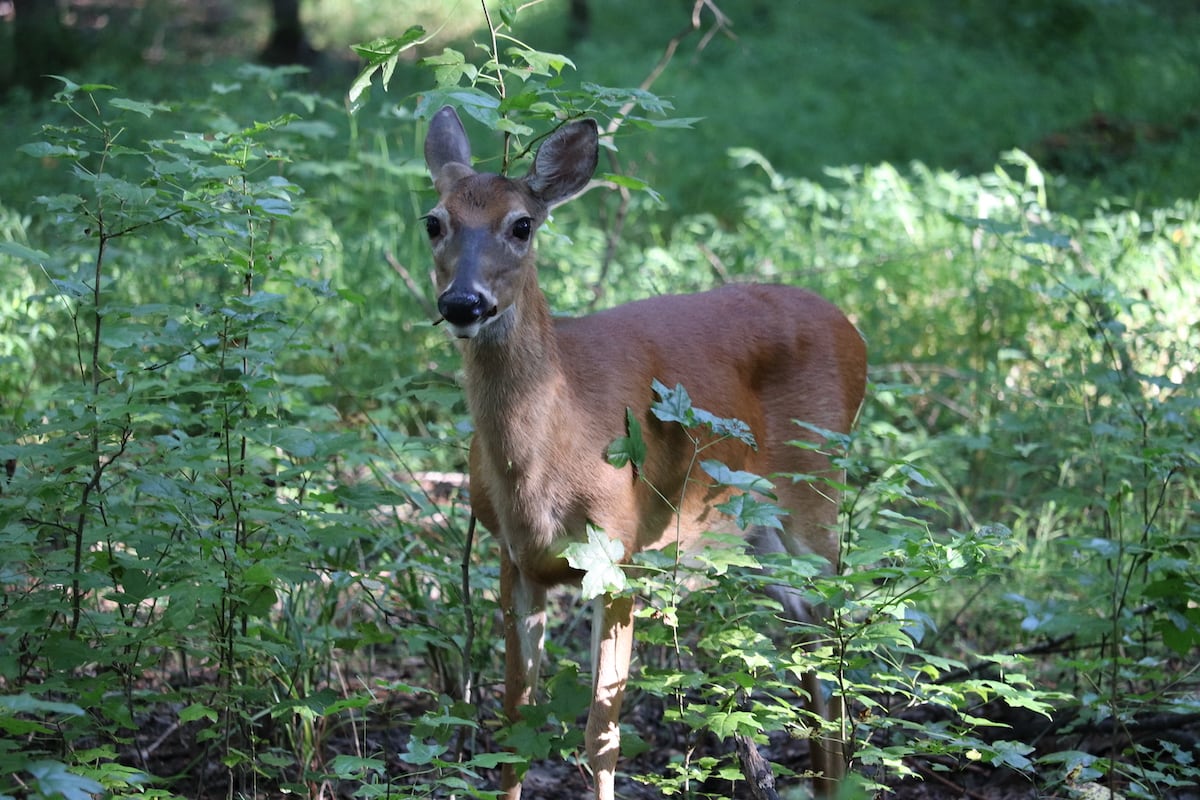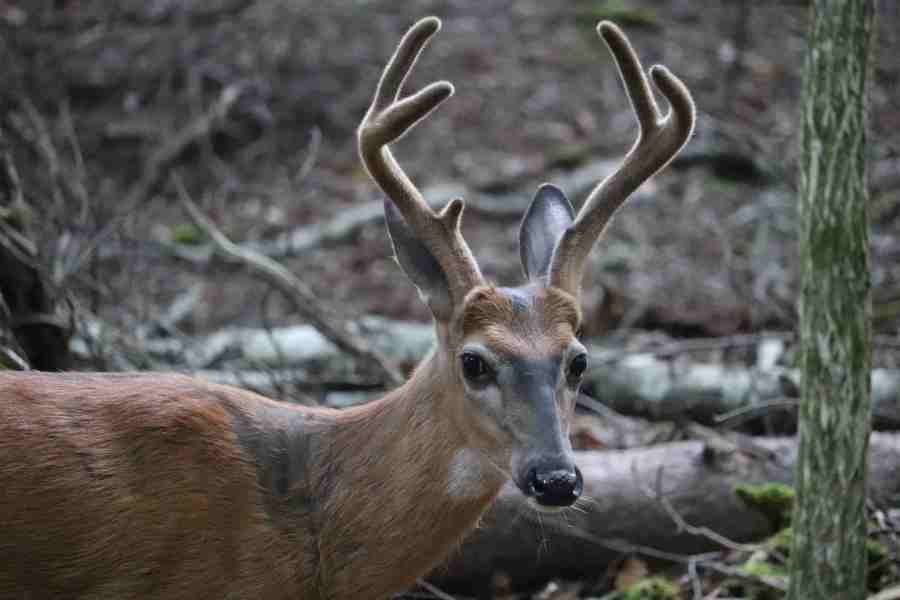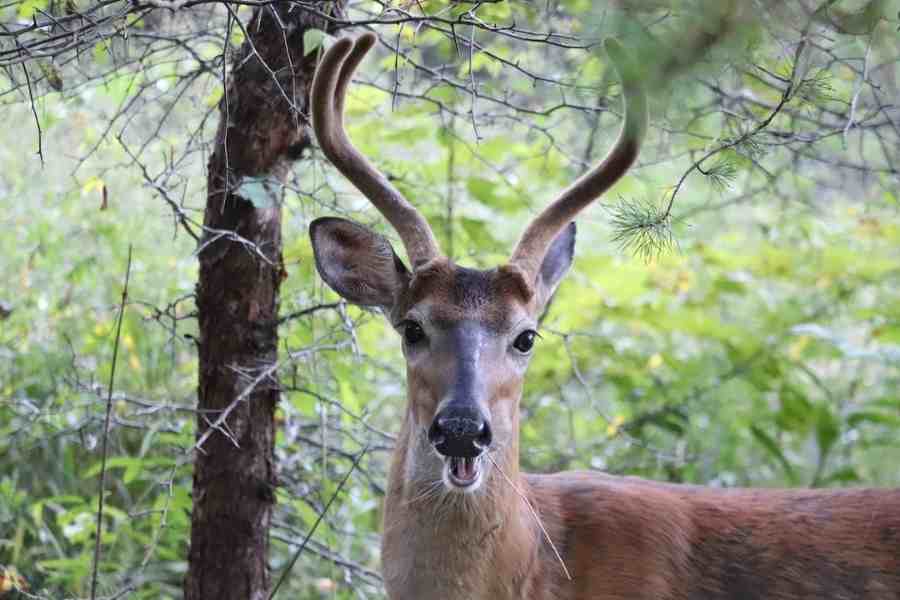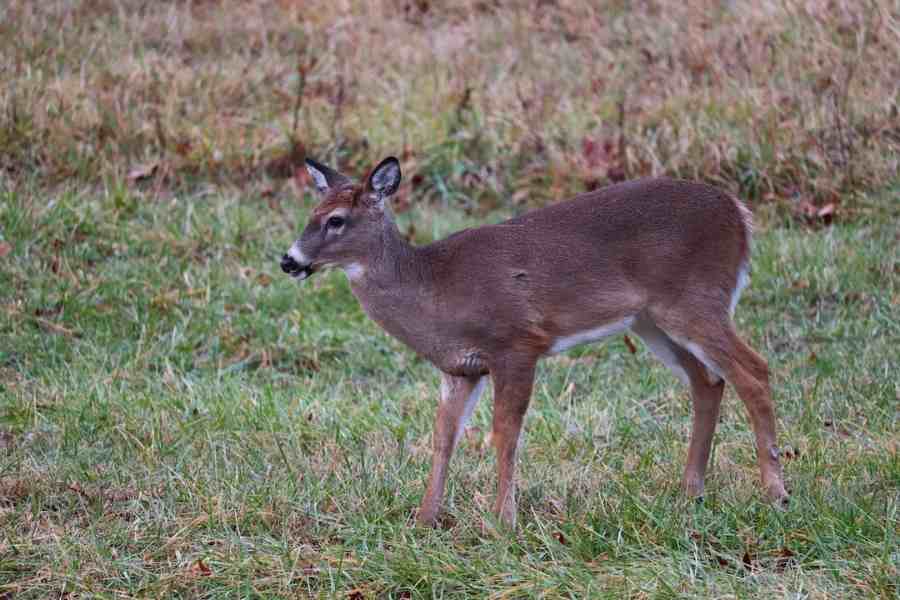When hunting, nothing renders success quite as consistently as thoroughly understanding the habits of the game we hunt. This is especially true when hunting extremely pattern-oriented game, such as whitetail deer.
New hunters, especially, are often left with many questions regarding the habits of the deer they hunt.
One such question relates to where deer go during the middle of the day. This is a valid quandary, as deer hunting is typically conducted during the first and final hours of light, yet not during the noon hour. So, where do deer disappear to during the heat of the day?
Read on to learn more about the midday habits of the whitetail deer and what these habits mean for the observant hunter.
TL;DR
Whitetail deer typically spend midday hours bedded down in secluded, heavy-cover areas like thickets or overgrown fields. They remain there until shortly before nightfall, when they venture out to more exposed food sources. Deer choose bedding areas that allow them to detect predators by scent and provide warmth/comfort. Hunters can use knowledge of bedding habits to intercept nocturnal bucks traveling to/from beds at dawn/dusk. Locate beds by scouting deer trails from food sources to cover on maps, then look for matted vegetation when the season ends.
Contents (Jump to Topic)
ToggleMidday Hideout
Whitetail deer generally return to their bedding areas during the daylight hours. Deer then generally stay within close proximity to their bedding areas until shortly before nightfall.
In most cases, deer will take to more exposed food sources, such as agricultural fields, during the evening hours.
The exact time deer return to and depart from their bedding areas daily depends on several factors. Barometric pressure, moon phase, and the amount of hunting pressure within a given area are important variables in this equation.
However, little affect a deer’s bedding habits as significantly as the temperature.
Deer tend to move more freely in the daylight during periods of cool weather. On the contrary, whitetail deer are far more likely to expedite their return to their bedding areas in the accompaniment of unseasonably warm temperatures.
This is especially true during the fall and winter months when deer sport heavier coats.
read more about trail cams here…
What Is a Bedding Area?
The term “bedding area” refers to a particular location where deer lounge and sleep, free from excess fear of intrusion. Bedding areas are often secluded and located within a relatively heavy cover.
Bedding with their backs to a rock or log is common for mature bucks. This type of environment affords additional security for deer during periods of vulnerability, such as when they are sleeping.
Common bedding areas include pine/cedar thickets, overgrown fields, and thickets. It is also worth mentioning that deer will often abandon even the best bedding areas if distributed excessively by humans or other predators.
In some cases, this abandonment is temporary, while more permanent withdrawal from an area may occur in extreme cases.
Additional environmental factors play into a deer’s choice of a bedding area. The first of these factors relate to a deer’s sense of smell.
Deer will readily bed at any location that allows them to use the prevailing wind to their advantage. This makes it possible to detect approaching predators, even if they cannot be seen. Deer will bed where they feel secure.
In certain instances, comfort-related concerns also play into a deer’s choice in the bedding area. This is especially true on a seasonal basis, primarily during the most bitter days of winter.
Most mature bucks will bed close by food sources outside of hunting seasons.
When weather of this variety takes hold, deer often prefer to bed on south-facing slopes due to the fact that these locations receive the first sunlight of the day.
This presents additional warmth for deer as they hunker down from the cold.
What Does This Mean for The Average Deer Hunter?
With a basic understanding of bedding habits, a hunter can better target a specific buck, even if their movements are largely nocturnal in nature.
Since deer tend to feed most heavily after nightfall and return to their beds shortly after daylight, one can hunt along game trails during a morning outing to intercept a buck during their travels.
Deer are mainly active during the twilight hours
This is an especially potent technique when hunting mature bucks, who tend to move predominantly under cover of darkness.
The closer you move to a deer’s bedding area during a morning hunt, the greater your chances of encountering a nocturnal buck during shooting light, thereby presenting you with the opportunity to end your hunt with success.
Along the same lines, hunting relatively close to a known bedding area during an evening hunt increases your chances of encountering a buck that is mainly nocturnal on his way to feed.
This strategy is exceptionally potent when employed amid an incoming cold front.
How To Identify Bedding Areas
In many instances, locating bedding locations within a particular area is far simpler than one might imagine. Doing so involves scouting from a distance, as deer arrive at and depart from popular food sources (such as food plots).
Note the particular direction in which these deer travel, keeping a thorough log of these movements.
Once sufficient scouting has been conducted to uncover the most prominent direction of travel to and from popular food sources, additional intel can be obtained by consulting a topographic or satellite imagery map.
Look carefully for quality cover within nearby proximity of the most heavily used deer trails that arrive and depart from the food sources you have scouted.
Mark any densely vegetated woodlots or overgrown fields positioned along with these points, providing a readily accessible point of reference on your map.
Directly following the conclusion of deer season, venture into these predetermined locations, looking carefully for matted or displaced vegetation.
Sign of this type, especially when accompanied by deer droppings or fur, is a sure identifier of frequented bedding locations.
A Word on Bedding Area Intrusion
It is extremely important to avoid intruding within a bedding area during deer season. Doing so can have dire consequences and is likely to impact your chances of success during the weeks to come.
You should also avoid moving too close to bedding areas when choosing a stand site by backtracking deer trails.
Additionally, it is important to consider the prevailing wind direction when hunting along deer travel routes close to known bedding areas.
While you might not be encroaching upon a particular bedding area itself, your scent can easily be carried into a bedding area located nearby. In turn, this can alert deer to your presence.
In general, I make it a point to hunt no closer than 300-yards from a bedding area when at all possible.
I also carefully check my wind before hunting near any known bedding areas, refusing to hunt a site of this nature if the wind is incorrect for that particular day.
Doing so prevents imparting excess pressure upon the deer in a given area, thereby increasing my chances of success.









